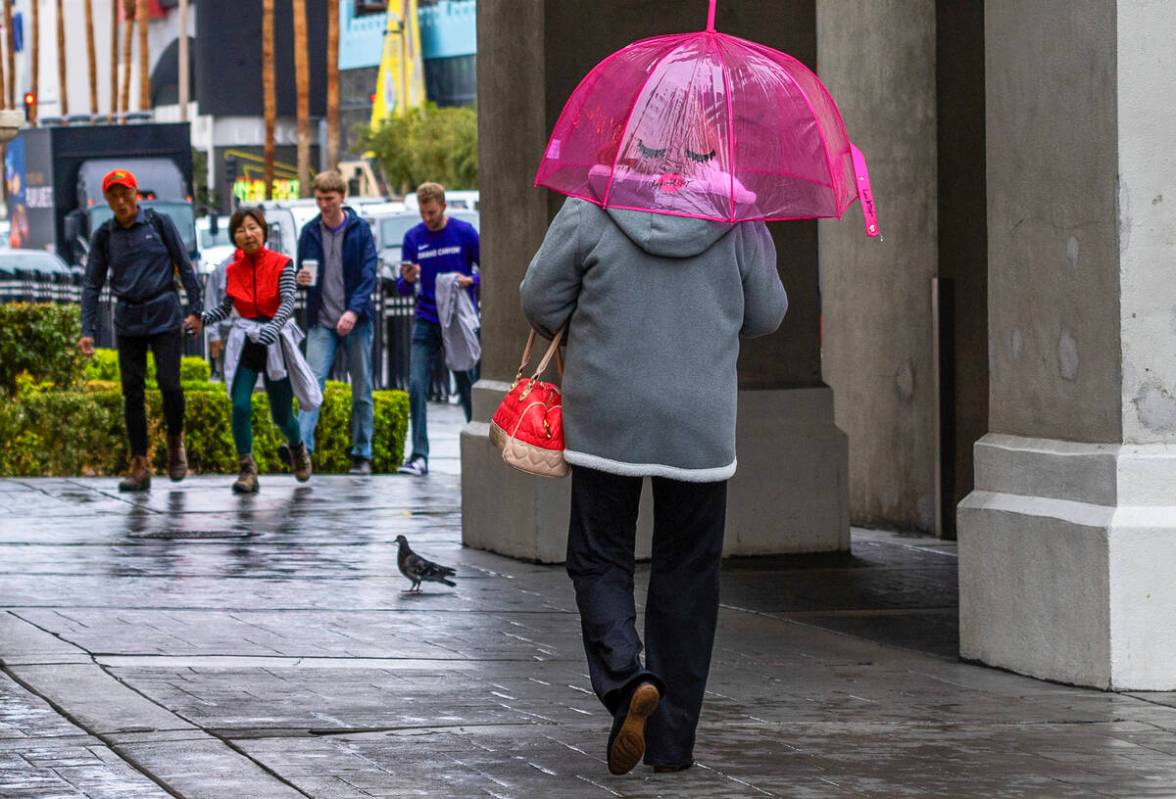Parts of Las Vegas Valley see rain for first time in September

Moderate rainfall fell in the Mount Charleston area Friday evening after several parts of the valley received limited precipitation.
About .04 to .08 of an inch fell across parts of the Spring Mountains as the cells moved from east to west and were leaving the valley.
Earlier, light rain fell in the Henderson area in the early evening after earlier mid-afternoon showers fell in the south end of the Las Vegas Valley.
Gauges in the south end of the valley showed .08 of an inch with the central Henderson area showing .16 of an inch.
To the far south, a gauge southwest of Jean showed three-quarters of an inch fell with a third of an inch logged north of Primm.
The Las Vegas airport has not recorded rainfall in 69 days, and did not receive rain Friday. The high reached 84.
Summer ends Sunday morning
A summer of record heat will officially end with mild conditions as fall begins early Sunday.
Precipitation could occur Friday night into Saturday morning with a Saturday high near 91.
The autumnal equinox arrives at 5:43 a.m. Sunday, and the day’s high should climb to around 94, the norm for this time of year.
The forecast calls for rising temperatures into the middle or upper 90s next week, so summer is not completely in the past.
Outside the valley
Red Rock Canyon: The Saturday high should be near 85 with light winds. Sunday is forecast to be sunny with a high near 87.
Spring Mountains: Fall conditions will be prevalent in the mountains this weekend with highs in the mid-60s. Sunday should be sunny with a high near 66.
Lake Mead: Saturday will be sunny with a high near 97 while Sunday’s should be sunny with a high around 101. Winds will be calm, making for good boating conditions.
Winter predictions released
The weather service’s Climate Prediction Center issued its winter precipitation/temperature forecast for the nation Friday.
With weather cycles shifting to a La Niña pattern, the CPC is projecting a 40 to 60 percent chance of above normal chance for temperatures for the Las Vegas area and a 33 to 40 percent chance of lower than normal precipitation.
La Niña is expected to dominate weather conditions from December through February, according to the National Oceanic and Atmospheric Administration. Such a pattern can vary, but often translates to wetter conditions in the northern tier of the country, and drier-than-average weather in the southern tier.
Contact Marvin Clemons at mclemons@reviewjournal.com.